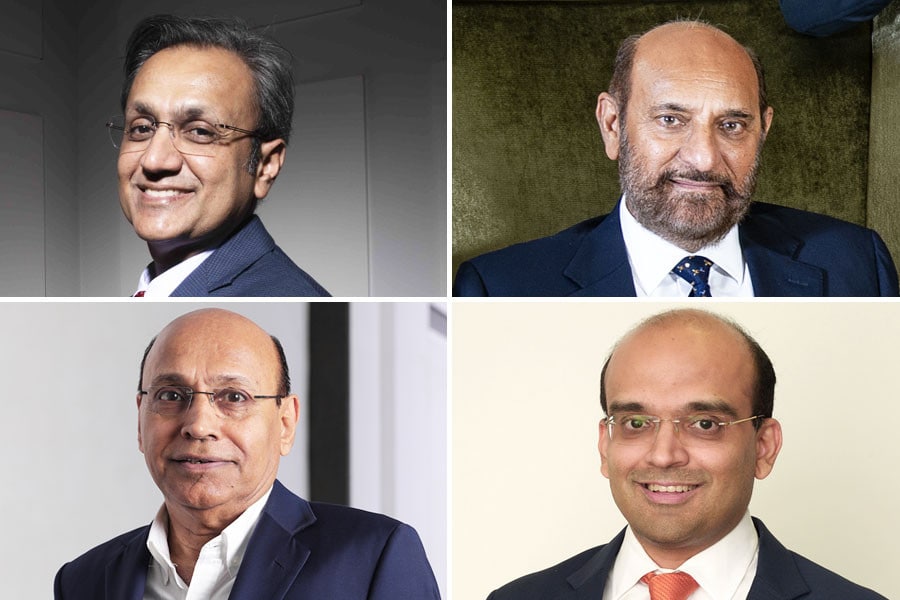
It's Berger Vs Asian Paints, Havells Vs Polycab on the Forbes India Rich List 2023
By Forbes India| Oct 13, 2023
In 2023, the net wealth of the Dhingra brothers totals $8.2 billion, a shade higher than the Dani family's at $8 billion, while Polycab India's Inder Jaisinghani has risen up 28 spots to rank 32
 [CAPTION]From top left: Anil Rai Gupta of Havells, Gurbachan Singh Dhingra of Berger Paints India, Malav Dani of Asian Paints and Inder Jaisinghani of Polycab India[/CAPTION]
[CAPTION]From top left: Anil Rai Gupta of Havells, Gurbachan Singh Dhingra of Berger Paints India, Malav Dani of Asian Paints and Inder Jaisinghani of Polycab India[/CAPTION]
Dhingras of Berger Paints overtake Asian Paints’ Dani family
For the Dhingra brothers of Berger Paints, it has been a stunning rise. A decade ago, they were worth $1.2 billion and were ranked 53 in the 2013 edition of the Forbes India Rich List. In 2023, the brothers’ net wealth totals $8.2 billion, which is a shade higher than the Dani family's at $8 billion. The Danis are one of the three promoter families of Asian Paints. Their holdings are now held by brothers Jalaj and Malav after the death of patriarch Ashwin Dani in September 2023. To be sure, Asian Paints is still the much larger of the two, and the total promoter wealth at Asian Paints accounts for $19 billion, with Mahendra Choksi worth $6.2 billion and the Vakil family worth $5.3 billion.
Polycab India’s Inder Jaisinghani becomes one of the big gainers this year and comes neck and neck with Havells India’s Anil Rai Gupta
In November 2021, Polycab India’s Inder Jaisinghani made his debut on the Forbes India Rich List at rank 57, with a net worth of $3.6 billion. On this year’s list, the chairman and MD of India's largest wire and cable maker has risen 28 spots up to rank 32. Jaisinghani is one of the biggest gainers on the list, whose wealth is up the most in percentage terms as the company benefited from increasing electrification and nearly doubled his family’s fortune to $6.4 billion.
Founder Qimat Rai Gupta of Havells made his debut on the list in 2013 at rank 68. After he passed away in 2014, the company has been run by his son Anil. The owner of the biggest FMEG player in India stands at rank 30 with a $6.7 billion net worth on the list. Havells is now more focused on growing its B2B business, digitally transforming its manufacturing facilities, scaling up their new IoT-enabled range of electrical consumer durables (ECD), and making the rural distribution network stronger. It is currently present in over 3000 towns.
On the other hand, Polycab has been concentrating on increasing its B2C business and expanding its international business, which has witnessed a growth of 54 percent CAGR over the past four years. However, it is still small in comparison to Havells in the fast-moving electrical goods (FMEG) and ECD segments, though analysts predict it can have a faster growth rate due to its dominance in the cables and wires segment.
In its previous quarterly results, Polycab’s net profit climbed to Rs 399 crore in the three months ended June 30, compared with Rs 220 crore a year ago. Even its competitor, Havells, witnessed an 18 percent jump in net profit last quarter. Polycab went public in 2019, much later than Havells. However, the former has outperformed in terms of growth.